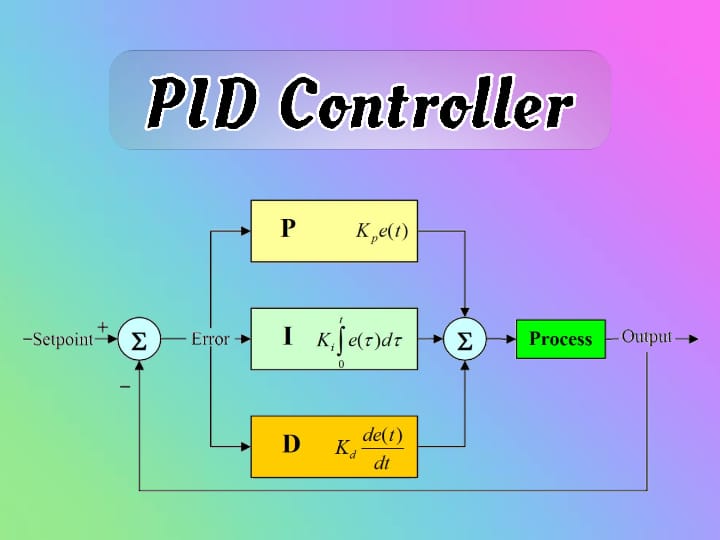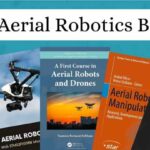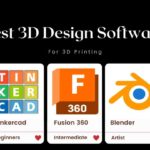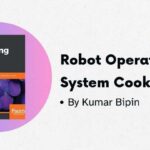Have you ever wondered how robots can move with such precision and grace, almost as if they have a mind of their own? The secret lies in the “brain” of the robot – the “PID controller.” It is the purpose of a Pid controller in Robotics.
Imagine you’re driving a car, and you need to maintain a steady speed. You constantly check your speedometer and adjust the gas pedal accordingly. That’s essentially what a “PID controller” does for robots – it’s a ingenious feedback system that continually monitors the robot’s actions and makes slight adjustments to keep it on the desired path or trajectory.

In simple terms, a “PID controller” is like a diligent navigator, constantly comparing the robot’s current state (position, speed, force, etc.) with the desired goal, and issuing corrective commands to steer it back on course.
Table of Contents
Three Components of PID Controller
At the heart of every “PID controller” lies a trio of powerful forces that work in perfect harmony to ensure robots stay on track. Just like a masterful conductor orchestrating a symphony, the “Proportional,” “Integral,” and “Derivative” terms collaborate seamlessly, each playing a unique and vital role.
Proportional Term
The “Proportional” term is the first responder, reacting swiftly to the present error in the system. Imagine a robot arm reaching for an object – the “Proportional” term immediately notices the deviation from the target position and adjusts accordingly, like a vigilant sentry keeping a watchful eye.
Integral Term
But what about those pesky accumulated errors that linger over time? That’s where the “Integral” term steps in, patiently accounting for the past transgressions and making calculated corrections. It’s like having a wise mentor who learns from past mistakes, ensuring the robot doesn’t repeat them.
Derivative Term
And just when you thought it couldn’t get any better, the “Derivative” term joins the fray, anticipating the rate of change of the error and preemptively adjusting the robot’s actions. This forward-thinking component is akin to a seasoned chess player, always thinking several moves ahead to stay one step ahead of the game.
So, the next time you marvel at a robot’s graceful movements or intricate maneuvers, remember the unsung heroes working tirelessly behind the scenes – the “PID controller’s” three components, masterfully orchestrating each action with their finely tuned interplay.
Purpose of PID in Robotics
Imagine you’re a master puppeteer, skillfully controlling the movements of an intricate marionette. Now, take that level of precision and amplify it a thousandfold – that’s the power a “PID controller” wields in the realm of robotics. These ingenious devices are the strings that enable robots to perform with unwavering accuracy and grace.
- Enabling precise control of motion and position is perhaps the most fundamental purpose of a “PID controller.” Whether it’s a robotic arm delicately assembling microchips or a humanoid robot executing a complex dance routine, these controllers ensure every movement is executed with pinpoint precision, like a world-class archer hitting the bullseye every time.
- But their capabilities extend far beyond mere precision. “PID controllers” also act as valiant guardians, compensating for external disturbances or system changes that could throw a robot off course. Just as a tightrope walker adjusts their balance in response to gusty winds, these controllers continuously make subtle adjustments, maintaining a robot’s stability and keeping it on its intended path.
- Stability is indeed the hallmark of a well-tuned “PID controller,” a notion aptly captured by the famous quote from American author and speaker Zig Ziglar: “Success is the maximum utilization of the ability you have.” By reducing steady-state errors and ensuring optimal performance, “PID controllers” help robots fully utilize their capabilities, unlocking their true potential.
So, whether you’re marveling at a robot’s intricate dance moves or watching in awe as a robotic arm assembles intricate machinery with superhuman precision, remember – it’s the “PID controller” that serves as the invisible maestro, conducting each movement with unparalleled finesse and control.
Advantages and Limitations of PID Controller
Have you ever watched in awe as a robotic arm gracefully maneuvers to assemble a complex piece of machinery? Or perhaps you’ve marveled at the seamless navigation of an autonomous robot traversing a crowded environment? Behind these remarkable feats lies the unsung hero – the “PID controller.”
Imagine a high-precision robotic arm tasked with assembling delicate electronic components. The “PID controller” meticulously governs the position and angle of each joint, ensuring every movement is executed with surgical precision. It’s like having a master artisan sculpting a masterpiece, but with a level of accuracy that would make even the steadiest human hand seem shaky.
Now, envision a fleet of autonomous robots navigating a busy factory floor or a team of Mars rovers exploring the rugged Martian terrain. These robots rely on “PID controllers” to regulate their velocity and speed, maintaining a steady course while deftly avoiding obstacles. It’s akin to a skilled driver expertly maneuvering through heavy traffic, constantly adjusting and adapting to the ever-changing conditions.
But the applications don’t stop there. “PID controllers” also play a crucial role in enabling robots to follow intricate paths and trajectories with unerring accuracy. Whether it’s a robotic painter creating a breathtaking mural or a surgical robot performing a delicate operation, these controllers ensure every movement adheres to the desired path, like a masterful calligrapher tracing each stroke with unwavering precision.
As the renowned inventor Charles Kettering once said, “The world hates change, yet it is the only thing that has brought progress.” “PID controllers” embrace this sentiment, adapting and adjusting to ever-changing conditions, enabling robots to tackle a multitude of tasks with remarkable efficiency and precision.
Final Thoughts
In the ever-evolving world of robotics, where precision and control are paramount, “PID controllers” stand as unsung heroes, quietly orchestrating the intricate movements and actions that we so often take for granted. Like the invisible strings guiding a marionette’s dance, these ingenious devices are the unseen force behind countless robotic marvels, from precision manufacturing to space exploration.
As we’ve discovered, the true power of “PID controllers” lies in their simplicity and versatility. With a masterful blend of proportional, integral, and derivative components, they enable robots to navigate the complexities of the real world with remarkable accuracy and adaptability.
So, the next time you find yourself in awe of a robot’s fluid motions or unwavering precision, remember the humble “PID controller” working tirelessly behind the scenes. For as the great inventor Nikola Tesla once said, “The present is theirs; the future, for which I really worked, is mine.” And in that future, “PID controllers” will undoubtedly continue to play a pivotal role, pushing the boundaries of what’s possible in the realm of robotics and beyond.









